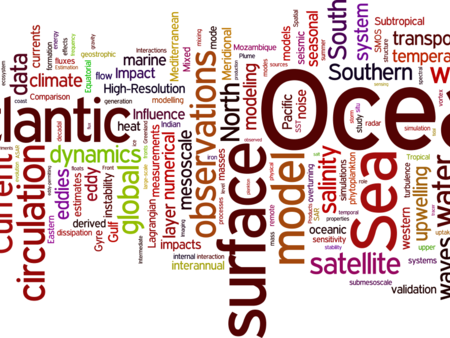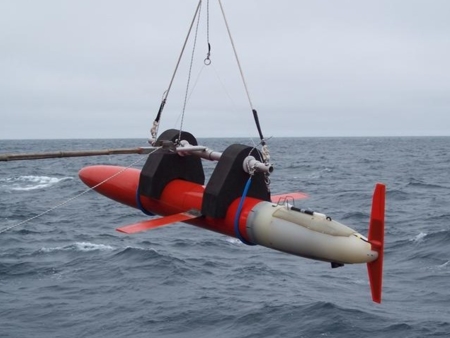Zoe Caspar
Titre de la thèse : Separation of quasi-geostrophic motions and internal waves for high-resolution satellite observation of the Ocean
Encadrants : Aurélien Ponte et Xavier Carton
Financements : demi bourses IFREMER et ANR
Date de début : 01/10/2019
Résumé : This study aims at improving the understanding and the observability of high frequency variability (internal tides) at the ocean surface. This variability will affect our ability to estimate the ocean circulation from data collected by the future wide-swath altimeter, SWOT (launch date 2022).
SWOT will collect maps of sea surface height with a resolution down to scales between 10 and 100 km with temporal resolution of the order of 20days. Internal tides and lower frequency balanced flow can, in general, be distinguished by their temporal scales. Because of SWOT limited temporal resolution however and of their comparable spatial scales,they will be entangled in the maps provided by SWOT and it will be difficult to disentangle them by temporal or spatial filtering.
I tackle this issue by leveraging the information brought by surface drifter trajectories (Lagrangian data). Notably we want to observe both fast and slow motions in Lagrangian and Eulerian data and compare results in both perspectives. What are the characteristics of signatures of fast and slow motions on the drifters' trajectories? How the simultaneous presence of both motions affects those signatures? How do these signatures compare to the ones in an Eulerian framework?
On a more long term, our goal is to identify which information can be extracted from drifters trajectories when both internal tides and balanced flow are observed. This work will improve our understanding of high frequency surface variability. It will also help to leverage the information useful in the context of SWOT. Finally it could also turn out useful to develop tools to validate emerging realistic simulations.







